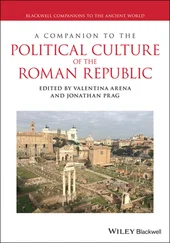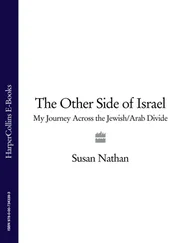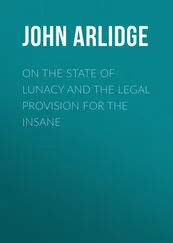In addition to these varieties of MA we consider opportune to mention the existence of other dialect varieties on which few studies have been reported, namely, the Judeo-Moroccan Arabic, possibly, due to the lack of particular location of the Jewish community in a particular region of Morocco or, probably, thanks to the harmonious coexistence and the absence of the exclusion of this community within Morocco. Jews were found in different cities of Morocco especially in some districts called “Mellah” also known as in Spanish where Jews used to live and where many of their commercial activities (mainly goldsmiths) were concentrated. Jewish Moroccan Arabic is reputed to share with Fassi and Tanji dialects the phonological characteristic of realizing the phoneme /q/ as /?/. Hassani Arabic is also now integrated in the geo-linguistic map of Morocco, following the independence of the Occidental Sahara from the Spanish colonizers and its integration into the Moroccan political map. Hassani Arabic or “Hassanyia” is the language spoken by natives of the geographical area located from Layyoun down to Morocco-Mauritanian border. This linguistic variety stands more as a variety of Arabic in a macro representation of the different varieties of Arabic spoken in the Arabic world than as a variety of MA.
1 With the aim of updating the geo-linguistic map of Morocco, it is worth mentioning that the Moroccan community counts with “six” and not “five” languages as it has been claimed up to the date considering the existence of the Hassani language. This language is a variety of Arabic spoken in the area from Layyoun down to the Moroccan border with Mauritania, a territory integrated into the Moroccan political map since 1974. During the Spanish protectorate, this region was referred to as the Occidental Sahara.
The absence of any mention of this language is probably not due to neglect, but rather to its recent integration in the political map of Morocco after its independence from the Spanish protectorate.
2 “M’sid” is a corruption of the Word “Masjid” (CA) and refers to the schools where the Coran is usually taught to children at an early age. These schools are a kind of nursery schools and they are normally situated in or next to the Mosque.
3 “M’dersa” is another corruption of the Word “Madrassah” (CA) .
4 Moroccan Arabic is also spoken by the Berber community. Most Berbers are completely bilingual and are able to use both MA and Berber ambivalently.
5 Every Arabic country has its own Arabic dialect as illustrated in what follows: Algerian (D), Tunisian (D), Lybian (D), Egyptian (D), Libanese (D), Jordan(d), Sirian (D), Palestinian(D), Sudanese(D), Khaliji (D) (“Khaliji” refers to the Arabic Dialects spoken in the Gulf countries), etc.
 3
3 
An overview on English-based theories in cross-cultural communication and politeness
Any given language is of necessity enclosed into the socio-cultural reality in which it is found. Inspired particularly by developments in the field of pragmatics (and the connection with sociolinguistics, psycholinguistics, linguistic anthropology, discourse analysis, second language learning/acquisition and cross-cultural research), recent studies have embraced a notably culture-sensitive orientation. This in turn has led to the integration of a wide range of socio-cultural factors which go beyond the traditional trilogy of grammar, phonology and lexis, and in this way communication between native and non-native speakers has come to be perceived as not simply inter-linguistic but also intercultural.
3.1. Cross-cultural communication
The notion of intercultural communication is rather complex. Banks et al. (1991) describe their notion of intercultural miscommunication as arising from the existence of two initial ‘obstacles’ that hint at a lack of agreement within the academic community as to the two components of this concept, i.e. inter-cultural and miscommunication. First, what is meant by ‘miscommunication’ is often ambiguous and varies among intercultural studies; and second, “what constitutes the realm of intercultural encounters is not universally agreed upon” (Banks et al. 1991: 103, cit. Lorenzo Dus, 1997). The term intercultural has typically been used to denote encounters between members of large cultural groups, namely different countries or ethnicities. However, Thomas, 1983, cit. ibid.) and (Cameron 1995, cit. ibid ) have claimed that inter-cultural does not simply refer to these two contexts, but can be used for other social settings, i.e. male female communication, intergenerational talk and even communication involving members of different social/professional backgrounds such as doctor-patient or legal practitioner-client interaction.
The problems speakers from different cultures find in interpreting the norms of others “based on generic cultural types” (Banks et al. 1991: 109, cit. ibid) can be found within this perspective. Individuals are perceived as representatives of different cultures. Asante et al. (1979, cit. ibid) identify two groups in this sense, on the basis of the research objectives of each group. The first school of researchers, known as cultural dialogists , assign priority to the foundation of a humanistic approach to communication theory and practice that would promote world understanding. The second group, labelled cultural criticism , intends to identify as the object of research those aspects of divergence between cultures. Sarangi (1995, cit. ibid) claims that both schools begin from common ground mainly because they share the same concern for the investigation of differences across cultures. He further argues that, despite the recognition of cultural differences in languages, these studies claim that “cultural problems are more significant than linguistic problems” (Sarangi 1995: 410, cit ibid), and they keep an analytical disconnection between language and culture.
With regard to this framework, cultures are evaluated in terms of generic cultural values that decisively affect the perception of how attempts at communication are made. Hall’s (1976, cit. ibid) study, subsequently applied by several intercultural communication theorists to particular cultural variables, takes this approach. Hall argues that cultures show a tendency towards High Context and Low Context communication. High Context refers to a form of communication where most of the mutual information is taken for granted and thus little information is conveyed. Conversely, Low Context is said to be a form of communication where little mutual information is assumed and most information is conveyed. The concept of High context/Low Context communication has been exploited in different ways, namely, as describing directness/indirectness and exaggeration/understatement, or individualism/collectivism (Cohen 1987). Likewise, a correlation has on occasion been established between these generic variables and intercultural communication.
The main issues at stake here are the supposed benefits of looking into the differences (cross-culturally determined) in realizations of specific linguistic activities, most frequently speech acts, as a means of shedding light on the causes of intercultural miscommunication. It has been argued that cross-cultural analysis on its own does not suffice for the understanding, let alone the prevention, of potential cases of intercultural miscommunication. Such an analysis needs complementing with a context-inclusive analysis of what strategies and discursive patterns are actually activated in each specific interaction, as well as personal, social and other variables. Thus, the fact that particular languages employ different formulae for the ‘same’ communicative routine, such as sneezing or coughing for example, does not automatically indicate that an English or an Arabic speaker will resort to their formulae when communicating in a different language. Even if they do, there may be other factors involved, such as a certain degree of tolerance or awareness on the part of the native speaker to the possibility of having misunderstood the non-native speaker’s utterance. Nonetheless, I concur with Gass and Varonis (1991: 130) in their claim that we “interpret through the filter of our native language”, and hence we do not undervalue the special position held by native speakers in their communication in a foreign language. An important issue here derives from the field of social psychology and involves individual versus group identity. The cultural difference approach, as Banks et al. (1991) argue, focuses on members’ communicative behaviour, together with their selection of linguistic codes and interactional strategies, as tools for individual and group identity preservation. What seems at stake in the cultural difference approach is the speakers’ adjustment of their behaviour to several cognitive and social dynamics, such as a sense of threat to ethnic identity (Bourhis and Giles 1977), an appeal for social approval, or a need to adhere to or detach oneself from others (Street and Giles 1982).
Читать дальше

 3
3 









